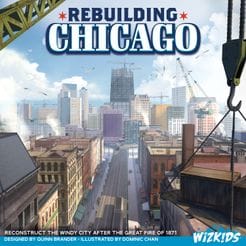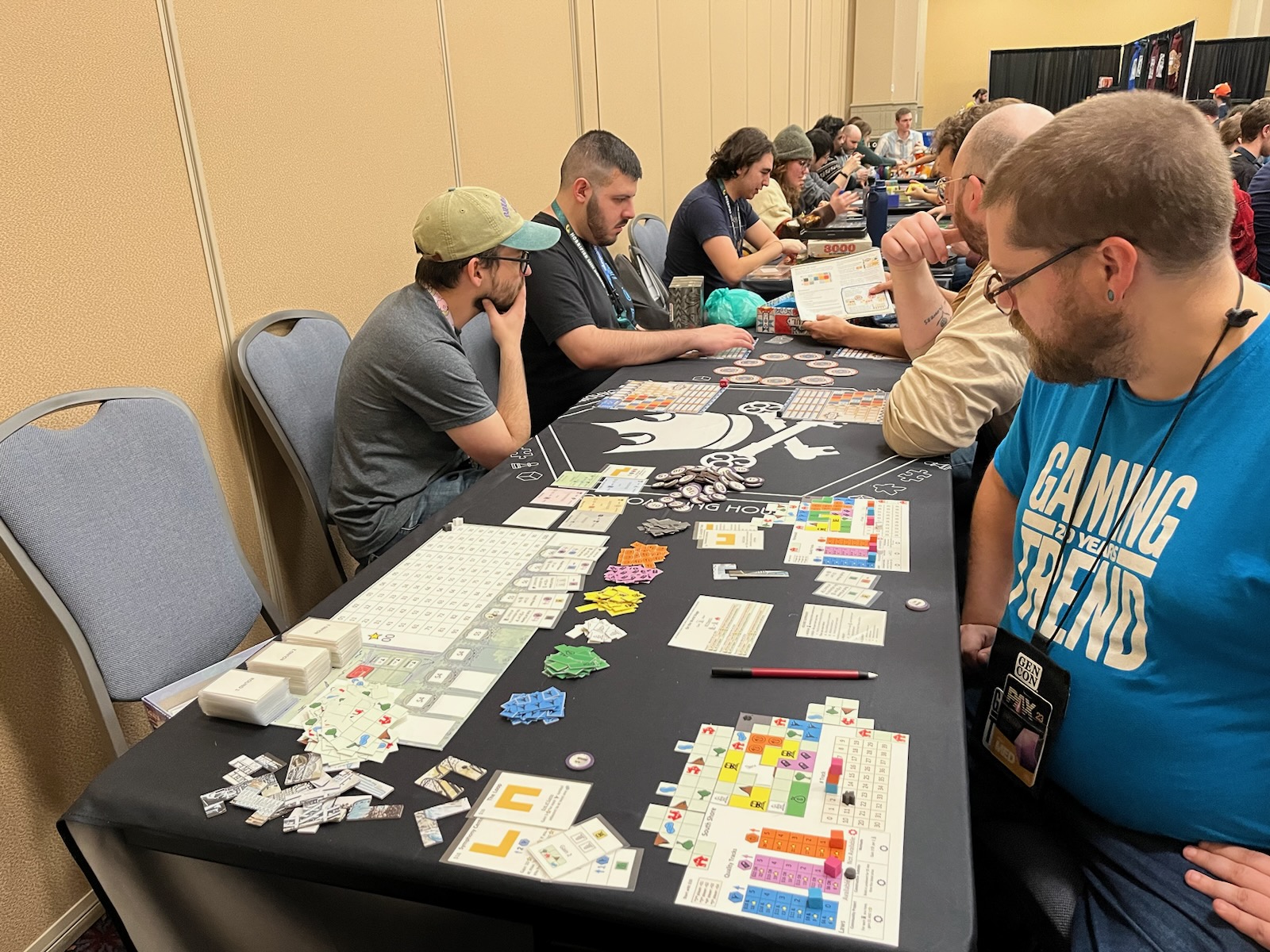
Easily my favorite part of attending cons is the off chance of running into the people behind my favorite stuff. At PAXU ‘22, I got to have a brief chat with Quinn Brander about the then-upcoming Rebuilding Seattle, which I promptly gave a 100 in my review. It was obviously a game I personally loved and appreciated the versatility of. That didn’t mean there weren’t valid criticisms like how expansion tiles trivialized the polyomino portion of the game and how it was simultaneously messy and a table hog. It also definitely leaned towards the lighter side, which did alienate it for some heavy gamers. A year later at PAXU ’23, I got to spend my Saturday hanging out with Brander trying to find a free table to play his prototype of the sequel, Rebuilding Chicago.

Once we found a spot and Brander was able to set up the prototype, I was immediately impressed by how neatly he tidied up all the little issues from Seattle while ratcheting up the difficulty for it to be a gamer’s game. Player boards are now integrated with starting tiles, and both those and the now awkwardly-shaped expansion tiles are littered with condemned building squares that you need to cover. Rebuilding Seattle’s market, which demanded a space for each card in a round and therefore used a whole table’s worth of space, is now a tidy rotating market that’s completely contained by the main board. Speaking of cards, they no longer give you both the building and the bonus effect, you’ve got to pick one. Building shapes are also no longer tied to specific cards, instead they just have a building type and you’ll grab the top polyomino out of that stack (I’ve been told there’s an insert for the polyominoes now, btw). The tiny size-one buildings you could get from the three commodity scoring events are gone, replaced by sculptures that score during the world’s fair event.
All this adds up to make Chicago a much more demanding game than Seattle. I went in expecting to rely on my experience with the predecessor and was immediately hit with a rude awakening, because my old lighthearted friend had become really mean. I’ve been shouting it from the rooftops ever since Wyrmspan was announced: taking the new wave of gateway games and making heavier adaptations should be the norm. Not only does it make business sense, but it’s also good for the consumer. Familiarity lessens the scare factor of more involved games, and having two similar games to compare your feelings about informs yourself of your tastes.
